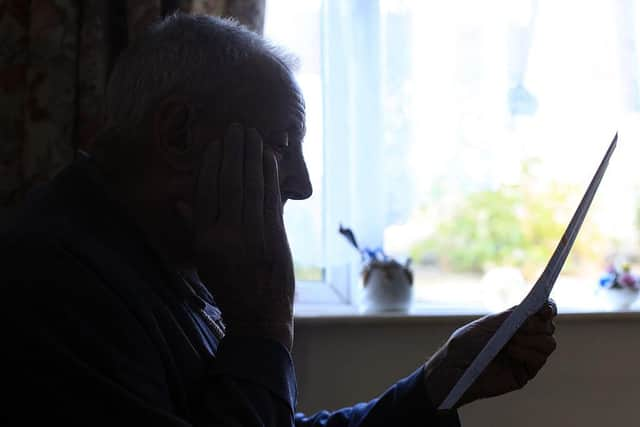Low income Doncaster families could soon be spending nearly 50 per cent of their income on energy bills
and live on Freeview channel 276
Latest predictions show energy prices could rise by 46 per cent, taking bills to a huge £2,879 this October when the latest energy price cap kicks in.
Households have already grappled with an average increase of 54 per cent when the April energy price cap came into play.
Advertisement
Hide AdAdvertisement
Hide AdDocuments seen by councillors show a single person on benefits today will still be spending a quarter of their standard allowance – the basic rate of Universal Credit – on energy bills.


From October, council bosses warn this could increase to 39 to 47 per cent of the standard allowance.
Polling commissioned by Citizens Advice shows that nearly half (47 per cent) of people on low incomes predict that they will fall behind on their essential bills, or cut back on essential spending.
Households on prepayment metres are already at a greater risk of fuel poverty, say council bosses.
Advertisement
Hide AdAdvertisement
Hide AdAccording to the most recent government figures, more than a quarter of households (31 per cent) who pay for their electricity via prepayment are ‘fuel poor’.
From April, more than half (52 per cent) of prepayment customers expect to be unable to afford their energy, or to have to cut back on essentials or fall behind on other essential bills. This is compared to under 1 in 3 (27 per cent) of people who pay by direct debit.
Allan Wiltshire, from DMBC, said: “A large number of Doncaster groups provide support to mitigate or prevent poverty, often across multiple themes including financial exclusion, debt and food poverty. There is a mixture of universal services and those targeted at low income, older people or people with disabilities.
“Sub groups were established for a series of poverty themes, whilst acknowledging the crossover between many issues. With agreed leads, the sub-groups assessed current and future need, current provision, potential interventions and measures.
Advertisement
Hide AdAdvertisement
Hide Ad“The sub-groups’ have been intelligence led, with informed approaches and actions changing as required.
“Much has been achieved but there is a lack of progress in some areas – there is much more to do.”